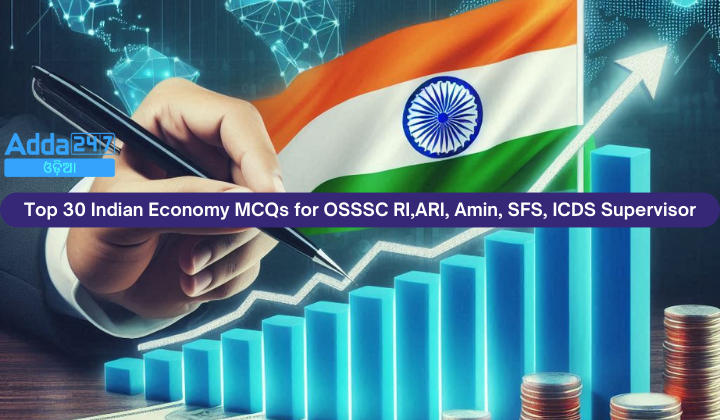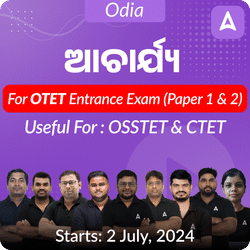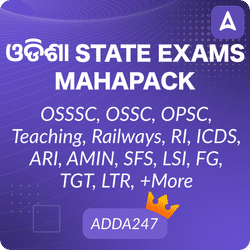Preparing for the OSSSC RI, ARI, Amin, SFS, and ICDS Supervisor exams requires a solid understanding of the Indian economy. These competitive exams often feature questions on economic concepts, policies, and current trends. A focused study of the top 30 multiple-choice questions (MCQs) can significantly enhance your readiness. These questions cover critical topics such as GDP growth, inflation, fiscal policy, banking reforms, and trade. They are tailored to align with the exam pattern, helping candidates gain a comprehensive overview and practice efficiently for their upcoming assessments.
Top 30 Indian Economy MCQs for OSSSC RI,ARI, Amin, SFS, ICDS Supervisor
- Since independence, India has been known as a ‘mixed economy’. Which sector has been primarily responsible for providing employment and revenue to the economy?
(a) Private Sector
(b) Public Sector
(c) Agriculture Sector
(d) Service Sector
Ans. (b) Public Sector - India’s share in global exports and imports increased from 0.7% and 0.8% respectively in 2000 to which of the following percentages in 2012 according to WTO estimates?
(a) 1.7% and 2.0%
(b) 1.5% and 2.2%
(c) 1.7% and 2.5%
(d) 1.8% and 2.3%
Ans. (c) 1.7% and 2.5% - Post-independence, Indian economy was highly inspired by which country’s practices, leading to a growth rate termed as ‘Hindu Growth Rate’?
(a) USA
(b) Soviet Union
(c) China
(d) Japan
Ans. (b) Soviet Union - In which year did India usher into the liberalization regime, leading to a new upward trend in the economy referred to as ‘New Hindu Growth Rate’?
(a) 1982
(b) 1985
(c) 1991
(d) 1992
Ans. (d) 1992 - Which sector is the major source of economic growth in India, accounting for more than half of its output with less than one third of its labour force?
(a) Agriculture
(b) Industry
(c) Services
(d) Handicrafts
Ans. (c) Services - As of 2013-14, what was India’s per capita income at current prices?
(a) Rs. 64920
(b) Rs. 69920
(c) Rs. 74920
(d) Rs. 79920
Ans. (c) Rs. 74920 - What percentage of India’s GDP was contributed by the tertiary sector in 2012-13?
(a) 54%
(b) 56%
(c) 58%
(d) 60%
Ans. (b) 56% - In the first half of calendar year 2015, which country saw the highest FDI inflow for new projects, surpassing America and China?
(a) Brazil
(b) Russia
(c) India
(d) Japan
Ans. (c) India - What was the total size of India’s foreign exchange reserve in 2015?
(a) $300 billion
(b) $320 billion
(c) $330 billion
(d) $340 billion
Ans. (c) $330 billion - According to the Rangarajan panel, what percentage of India’s population was estimated to live below the poverty line in 2011-12?
(a) 21.9%
(b) 25.5%
(c) 29.5%
(d) 35.0%
Ans. (c) 29.5% - The Balance of Payments (BOP) is a systematic statement of all economic transactions of a country with the rest of the world during a specific period. Which accounting method is used for BOP?
(a) Single-entry book-keeping
(b) Double-entry book-keeping
(c) Cash accounting
(d) Accrual accounting
Ans. (b) Double-entry book-keeping
The Balance of Payments (BOP) is calculated to understand the strength and weaknesses of the economy in international relations. - Which of the following is NOT a purpose of calculating BOP?
(a) Analyzing overall gains and losses from international trade
(b) Giving warning signals for future policy formation
(c) Determining internal budget allocations
(d) Knowing the composition and direction of international trade
Ans. (c) Determining internal budget allocations - Which of the following accounts is NOT a part of the Balance of Payments?
(a) Current Account
(b) Capital Account
(c) Financial Account
(d) Savings Account
Ans. (d) Savings Account - What is recorded in the Current Account of the BOP?
(a) Inflows and outflows of capital
(b) International capital transfers
(c) Export and import of goods and services
(d) Government-owned assets
Ans. (c) Export and import of goods and services - In the BOP, if a country has received money, this transaction is known as:
(a) Debit
(b) Credit
(c) Deficit
(d) Surplus
Ans. (b) Credit - Which component of the Current Account includes worker’s remittances and foreign aids?
(a) Merchandise trade
(b) Services
(c) Receipts from income-generating assets
(d) Unilateral transfers
Ans. (d) Unilateral transfers - The Capital Account of the BOP deals with:
(a) Export and import of goods
(b) Monetary flows related to business investments
(c) Inflows and outflows of capital
(d) Government-owned assets
Ans. (c) Inflows and outflows of capital - What does the Financial Account in the BOP include?
(a) Acquisition or disposal of non-financial assets
(b) Government-owned assets such as foreign reserves
(c) Transfers of ownership on fixed assets
(d) All international capital transfers
Ans. (b) Government-owned assets such as foreign reserves - When a country’s exports exceed its imports, the BOP is referred to as:
(a) Balanced BOP
(b) Unfavorable BOP
(c) Surplus BOP
(d) Deficit BOP
Ans. (c) Surplus BOP - A country experiencing a current account deficit that is financed by the capital account is:
(a) Foregoing goods and services for more capital assets
(b) Foregoing capital assets for more goods and services
(c) Increasing its foreign reserves
(d) Reducing its international investments
Ans. (b) Foregoing capital assets for more goods and services - In which year was the concept of MSP introduced in India?
(a) 1966
(b) 1950
(c) 1947
(d) 2000
Ans. a
Explanation: The concept of Minimum Support Price was first introduced for wheat in 1966-67. - How much is the MSP for wheat in 2021?
(a) Rs 2000 per quintal
(b) Rs 2015 per quintal
(c) Rs 1000 per quintal
(d) Rs 4000 per quintal
Ans. b
Explanation: The Government of India has recently hiked the minimum support price for wheat by Rs 40 making it INR 2015 per quintal now. - For how many crops does the Government fix the MSP for in India currently?
(a) 21
(b) 22
(c) 23
(d) 25
Ans. c
Explanation: Currently, the government fixes MSPs for 23 crops grown in both kharif and rabi seasons. - The minimum support price is
(a) The price at which farmers sell their crops to the food business companies
(b) The price at which the people of the place can buy crops from farmers
(c) The price at which the Government buys grains from the farmers
(d) The price at which the crops can be exported
Ans. c
Explanation: MSP is the rate at which the government buys the grain from farmers. - Which month does the Rabi season begin?
(a) January
(b) June
(c) October
(d) March
Ans. c
Explanation: The Rabi crops are sown in the month of October. - What is the recent MSP of the mustard crop fixed by the Government of India?
(a) ₹ 2000 per quintal
(b) ₹ 5050 per quintal
(c) ₹ 5000 per quintal
(d) ₹ 2980 per quintal
Ans. b
Explanation: The Government has hiked the mustard price by INR 400 to make it ₹5,050 per quintal.
Who fixes the Minimum Support Price for the crops? - (a) Cabinet Committee on Economic Affairs
(b) Parliament of India
(c) Commission for Agricultural Costs and Prices
(d) NITI Ayog
Ans. a
Explanation: The Cabinet Committee on Economic Affairs based on the recommendations of CACP fixes the MSP. - Which of the following is not a Kharif Crop?
(a) Guar
(b) Jowar
(c) Mustard
(d) Paddy
Ans. c
Explanation: Mustard is a Rabi crop and not a Kharif crop. - Which among the following is a Rabi crop?
(a) Barley
(b) Gram
(c) Masoor
(d) All of the above
Ans. d
Explanation: Rabi crops include crops like barley, wheat, gram, safflower, lentils including masoor etc. - In which of the following months is the Kharif crop harvested?
(a) August
(b) June
(c) October
(d) January
Ans. c





